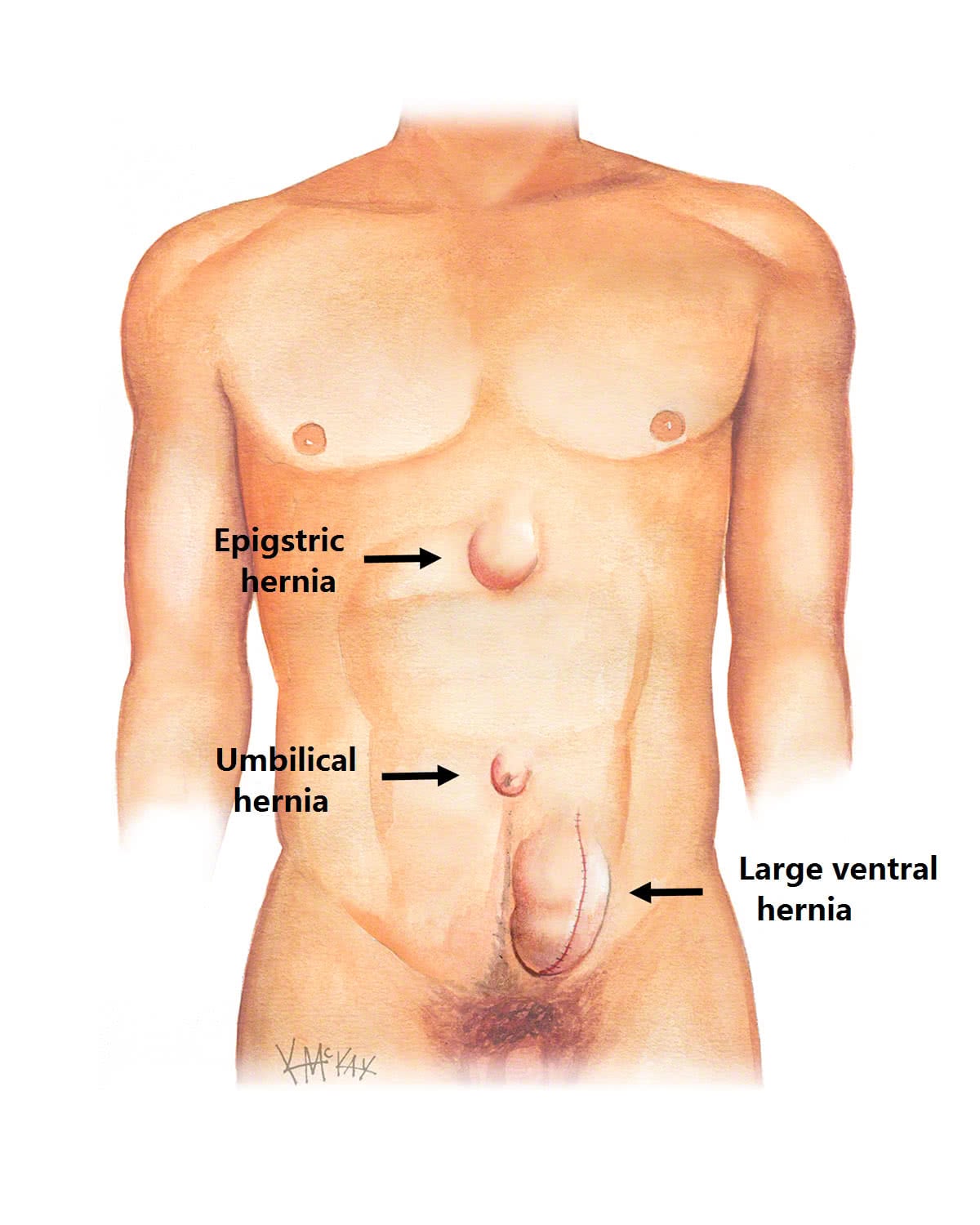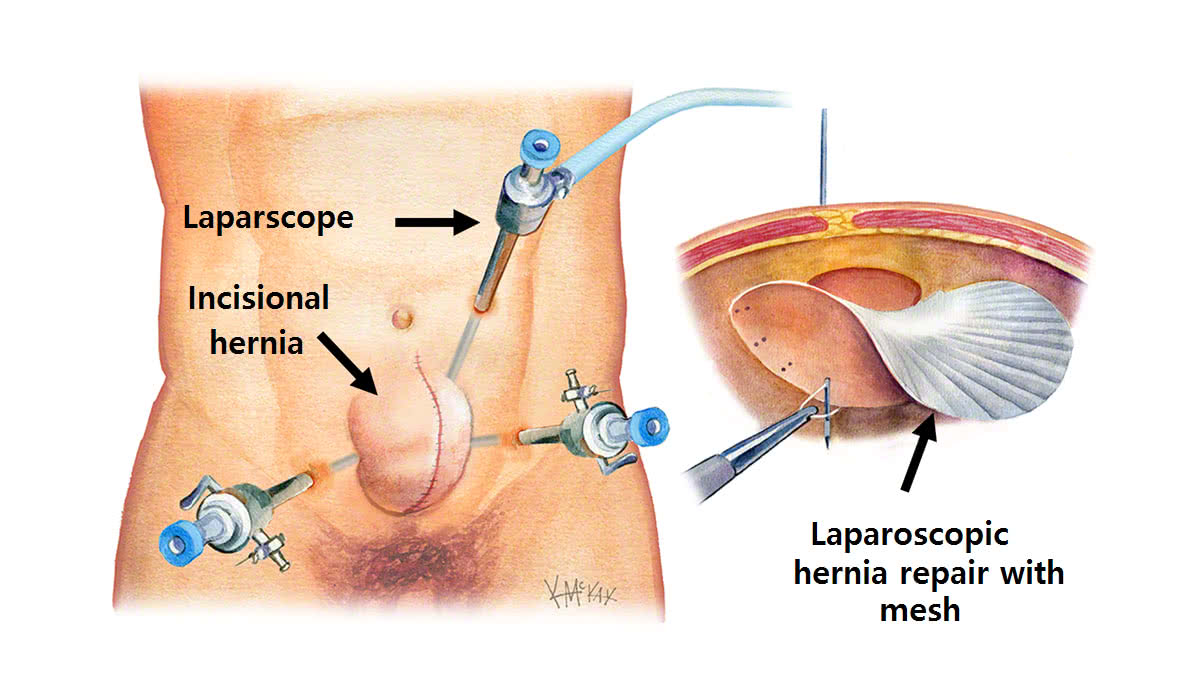Incisional hernia repair can be performed as an open or key hole (laparascopic) procedure)
Open incisional hernia repair
Open incisional hernia repair is often required if suspected intra-abdominal adhesions prevent a key-hole (laparoscopic approach). The ideal open repair is a sublay in which the mesh is placed between the inner peritoneal lining on the inside and the posterior rectus sheath on the outside. This repair reduces the risk of mesh infection and fistula formation. Occasionally an open repair is combined with an abdominoplasty, where the excess skin and fat is also excised at the same time.

Key-hole (laparoscopic) incisional hernia repair
Key-hole (laparoscopic) hernia repair has the advantage of being minimally invasive thereby avoiding a large incision, resulting in less pain, and earlier return to normal activities. It involves the placement of a mesh inside the abdomen, with a smooth non-sticky surface on the visceral side, and a rough porous surface on the abdominal wall side (figure 1). This allows the mesh to be incorporated into the tissues of the abdominal wall, whilst preventing small bowel adherence to the mesh.

What to expect post operatively after key-hole incisional hernia surgery
Key-hole (laparoscopic) incisional hernia surgery can be performed as a day stay procedure, although usually requires admission overnight. Following your hernia repair, you will recover for a hour until the effects of the sedatives have worn off. If your surgery is being performed as a day-stay procedure, you will be allowed to leave several hours after your anaesthetic has worn off. You should not drive yourself home after your procedure and should have someone organised (a friend or relative) to accompany you.
Whilst return to light activities is possible within a few days of key-hole hernia surgery, no heavy lifting (>10kg) should occur for at least 6 weeks following your surgery to avoid a recurrence of your hernia. Simple over the counter analgesia may be sufficient for pain in the first few days following your surgery. However, you will be sent home with a script for stronger analgesia should you need this.
Your outer (Comfeel) dressings can be removed 7 days after your surgery, with the inner “steri-strip” dressings removed anytime from 7-14 days after your surgery.
You should follow up with your surgeon in 6 weeks to review your wound. Occasionally a sterile collection of fluid (seroma) will develop and will require a single needled drainage in the rooms.
